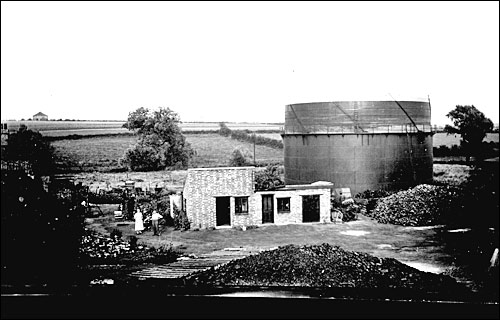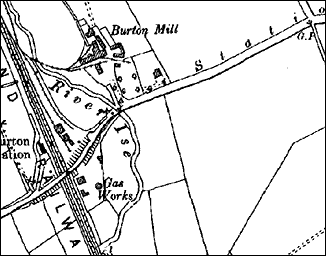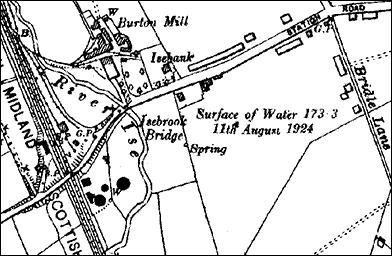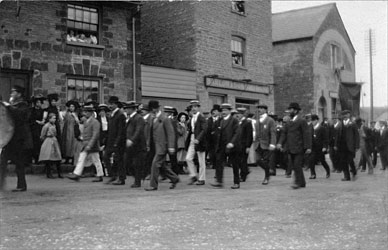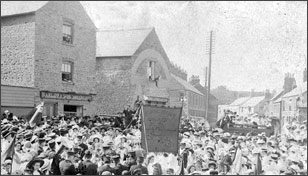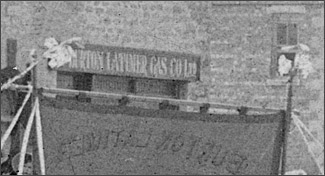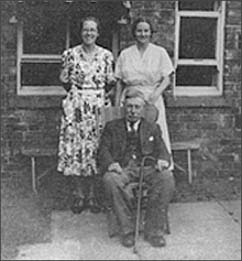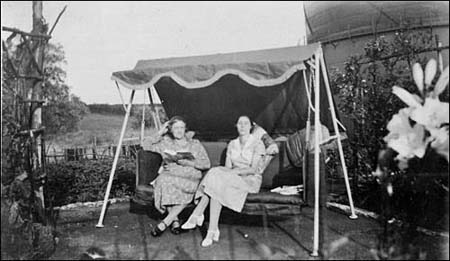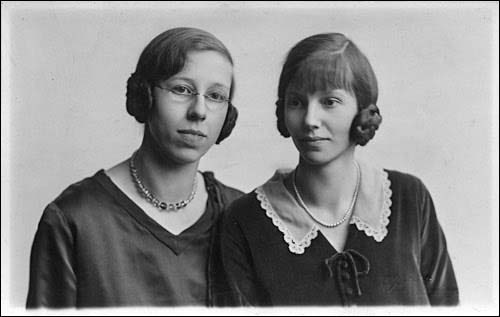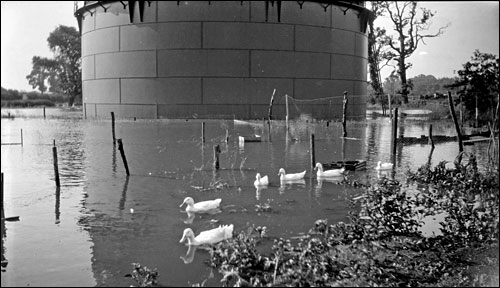| Original article by Douglas Ashby, transcribed by Sarah Gilbert | ||||||||||||||||||
|
||||||||||||||||||
|
||||||||||||||||||
|
When standing on the railway bridge in
The Midland Railway was constructed in 1857 and this is where the Parish Boundaries of Burton Latimer, Isham and Pytchley meet. Although it was known as ‘Isham and Burton Latimer Station’ the Station House was in the parish of Burton Latimer, the Gas Works in Isham and the signal box in Pytchley. This must have been a headache for the Rating authority to administer!
A public meeting was held on the evening of Wednesday, April 12th 1893, in the Baptist Assembly Rooms in Burton Latimer, for the purpose of endeavouring to form a Gas Company for the village. The meeting was well attended and the Reverend Thomas Collings occupied the Chair. It was unanimously agreed that a Gas Company, with limited liability, be formed, at once, with a Share Capital of £3,000 and the capital to be raised by means of 1000 shares of £3 each. The following people promised to become shareholders: Messrs.A. Downing, J.A.Wallis, C. Barlow, T. Collings, J. Cooper, D. James, H.Ayres, W.H. Allen, E.E. James, E. Larrard, F.T. Freestone, G. Perkins, T. Bird, W. Bates, W. Meads and T. James. Of these, J.A. Wallis, T. Collings, C. Barlow, A. Downing, J. Cooper, D. James and F.T. Freestone were elected as provisional directors with F.T. Freestone also acting as Secretary. Mr. Wallis was a director of Wallis’s Mill, which became Weetabix in 1932, and lived at Isebank, the large stone built house that now serves as offices. Mr. Collings was the Baptist Minister from 1885 to 1896 and again from 1899 to 1900. Between those years he was Editor of the ‘ Mr. Cooper was a baker and his premises were in the yard that once occupied the site of the car park at the junction of
Director’s meetings were held in the Baptist Assembly Rooms, the Lower Schoolroom (now John Yeoman Hall) or in the front room of Mr. Freestone’s home in Various sites, on fields near the railway, were considered for the Gas Works. The Reverend Henry Harpur, Mr. J. Wallis, the Reverend Blake and a Mrs. Jones all owned fields in that area, however, it was the latter, Mrs. Jones, who agreed to sell an acre of land for £140. It was accepted as being the most suitable site to enable the railway to construct a siding.
The cost of the siding, in 1895, was £96.15.11 and the buildings were erected, in the same year, by Alfred Lewis, of Isham, for £1200. In later years on the High Street were opened as an office and showroom with Mr. W. Harwood as secretary. Those premises are now occupied by the ‘
On November 4th 1895, a Mr. R.J. Rankin, of Burton Latimer, applied for the post of Works Manager for a wage of £1.5.0. per week. The Directors agreed to pay him £1.8.0 per week and deduct 4/- for the rent of the house. He does not appear to have stayed long; by 1899 the Manager was Mr. H. Banks who asked for an increase in wages.: He was given £1.6.0. Certainly, by 1905, there was a change of Manager as, in 1986, I replied to a letter from Mr. Ben Orchard, living in Gloucestershire, who wrote that his father was Manager until about 1913. He also told me that his mother attended the
Letters were sent to local businesses and residents inviting them to have gas connected. Gas was used for the first time on January 5th 1896 in the
In 1898 the Balance Sheet for the Burton Latimer Gas Company showed a profit on the years trading of £211.18.11. It must, therefore, have come as a surprise to the directors, if not disappointment or even annoyance, to receive a letter, in 1899, from Burton Latimer Co-operative Society. It informed the directors that the Co-op had made arrangements with the Finedon Gas Company to supply them with coke for the following six months! Nevertheless, in 1914, profits had risen to £820.10.1.
A roomy house, which had a pretty garden bordering the river, was provided for the Works Manager. In the time of the Boxwell family being in residence there was also a tennis court. I can still visualise when I was a boy Ron and Bert Boxwell would cycle around the village and erect their ladder to light the lamps in the streets which were then extinguished at midnight. Ron and Bert had two sisters: Hilda and Doris.
The stretch of road which leads to the railway bridge was supported on arches because of flooding. As children we fished for newts in the water that stood under the road there. It was also a sight to see the flames belching out from the boiler house when the men were stoking up.
The company was amalgamated with the Kettering Gas Company in June 1940, and subsequently in September 1942, the Burton Latimer Gas Company was voluntarily wound up. The Chairman at the time was Mr F T Freestone. The gasometers remained for a while after the rest of the buildings were demolished in the 1960’s. With the advent of Burton Latimer Railway Station closed to passengers in the early 1950s when the waiting rooms and the steps leading down from the bridge were demolished. Some time ago, there was a suggestion that our Railway Station might re-open for passengers, but that is another story! |
||||||||||||||||||
